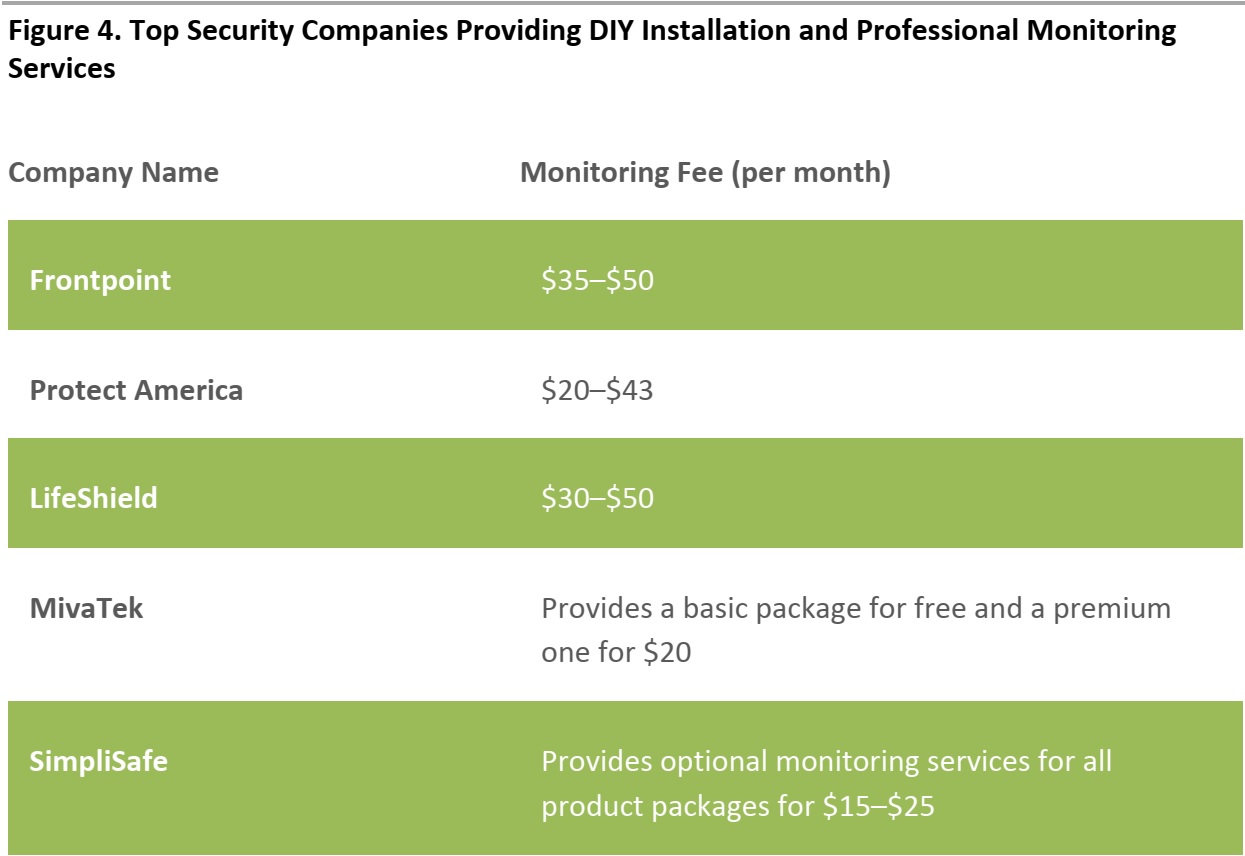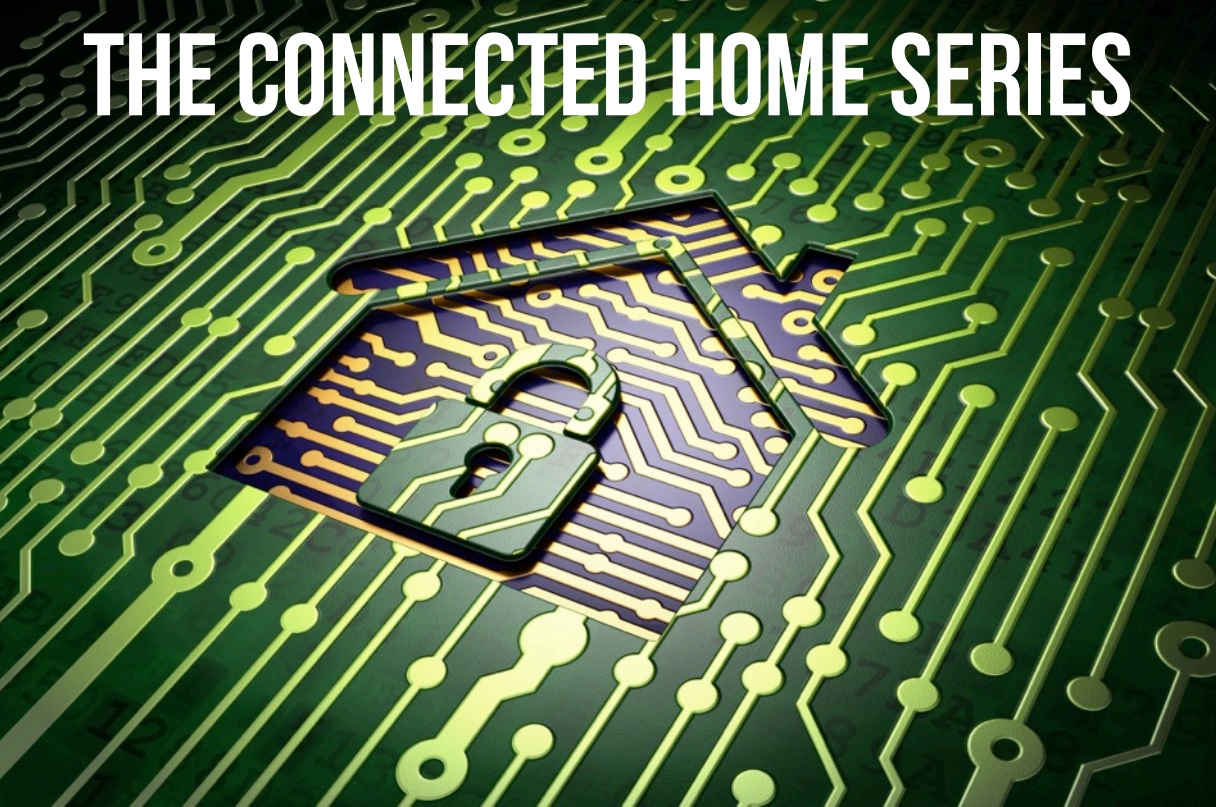
Web Developers
EXECUTIVE SUMMARY
Demand for security is by far the main reason for adopting smart-home technologies. Fully 90% of consumers pegged home security as the top reason for adopting a smart home, according to Icontrol Networks’ 2015 State of the Smart Home Report. Traditional home security systems consisted of clunky hardware, with slow information relay and a low level of threat detection. Any sort of alarm would be raised only after a security threshold was breached, smart security systems have enhanced threat-detection ability where a user can be notified before a break-in occurs, by looking for unusual activity. Security dealers have chosen to stock and offer more smart security systems and services, as customers are increasingly aware of new technology—this is the first market driver. High demand for smart home security solutions is the second market driver. Third, demand from two specific demographic groups—dual-income families and senior citizens—is also influencing growth in this market. There are three types of home security players, according to Citibank’s research. The first, which currently hold 93% of the market share, professionally install and monitor security devices. The second hold 4.7% of the market share and sell security devices that can be installed by a customer, but provide professional monitoring services for a fee. The third group, which holds 2.3% of the market share, sells devices that customers install and monitor themselves, most smart security devices are in this category. Citibank estimates that the last category will command 34% of the market in five years, with professionally installed and monitored systems dropping to 61% of the market. Though many traditional security systems do not yet possess smart features, we think manufacturers and providers will be forced to create connected devices if they have not already taken the initiative to do so. As consumers switch to smart security systems, we predict that domestic ownership of their traditional electronic counterparts will be negligible in 20 years’ time.Smart Home Security
Imagine setting off a 100-decibel intruder alarm in your house because you forgot your keys and tried to get in, or watching a video and trying to decipher the identity of a cleverly disguised burglar who broke into your house. Now, imagine there is discreet and high-quality technology that allows you to prevent such incidents and keeps your home safe and secure while you are away. And imagine that it also tells your thermostat to warm your living room before you get home, greets you on arrival and instructs your ambient lights to turn on. In the age of smart security, this is a reality! We examined the current state of the connected home industry in the first of our Connected Home series of reports, entitled What Happens When Your Home Is Smarter than You? We looked at the various drivers that make consumers switch to home automation, and home security topped the list. Indeed, Icontrol Networks’ 2015 State of the Smart Home Report stated that 90% of consumers pegged home security as the top reason for adopting a smart home. In this report, we explore the reasons that smart home security systems are growing in popularity.
We examined the current state of the connected home industry in the first of our Connected Home series of reports, entitled What Happens When Your Home Is Smarter than You? We looked at the various drivers that make consumers switch to home automation, and home security topped the list. Indeed, Icontrol Networks’ 2015 State of the Smart Home Report stated that 90% of consumers pegged home security as the top reason for adopting a smart home. In this report, we explore the reasons that smart home security systems are growing in popularity.
DIFFERENCES BETWEEN TRADITIONAL SECURITY SYSTEMS AND SMART SYSTEMS
Traditional: Clunky Hardware
Conventional CCTV cameras used for security surveillance capture footage on videotapes that are either erased and reused or saved and accumulated over the years. This sort of analog technology makes surveillance systems bulky because of the format in which videos are processed and stored.Smart: Sleek Hardware
Smart home security systems, on the other hand, are nearly invisible to most people and are designed to blend in with their surroundings. In the 1990s, a technology wave dramatically altered the way security footage was captured: cameras began to use digital technology that captured video with a higher resolution and a longer duration. Network-based cameras, or Internet protocol (IP) cameras, revolutionized surveillance, bringing with them many new functions. Video captured by IP cameras can be easily stored and transferred to the cloud or a smaller storage disk, for example. As these cameras have evolved, designers have made their shapes and sizes more aesthetically pleasing for use in the home, but still capable of providing good-quality recording.Traditional: Slow Information Relay
Traditional automatic home alarm systems look bulky and are mostly based on breaking an electrical circuit. In the event of a forced entry into a property, the electric circuit is broken, setting off a loud alarm intended to deter the intruder, while at the same time alerting the police/security team about the situation. If the owner is out, and a burglar manages to physically breach the home alarm system without triggering it, the owner cannot be alerted instantly—and the time lag from breach to response is significantly longer.Smart: Faster Information Relay
Smart home security systems show owners who is at the door and if there is activity in an area of the house that is normally quiet. Some systems even provide weather-based information. Alarms are not sounded unnecessarily; the owner is typically alerted first and then allowed to make a decision on a course of action.Traditional: Low Level of Threat Detection
Due to the design of conventional home security systems, anyone who does not have the right key to a property is viewed as a threat, and anyone who does have a key is allowed access. If keys have been duplicated, there is no way of knowing in real time if an unauthorized person enters a property.Smart: Enhanced Threat Detection
Smart systems allow the homeowner to grant access to authorized persons when the homeowner is away. Facial recognition or digital keys allow the system to differentiate between a threat and a safe situation. For example, a homeowner could give a plumber access to the home without the owner having to be present.Traditional: Mono-Functional
Conventional security systems have a single goal: to keep the home safe from break-ins. Cameras must be manually turned off when recording is not necessary, and entering a home with the right key merely means that the alarm will not go off.Smart: Multi-Functional
Smart security systems work in tandem with other connected products around the home. Smart door locks and sensors know when an owner is approaching the home and unlock automatically. Once the system detects that a homeowner/family is home, it can interact with lights and heating systems to adjust to the presence of people.THE KEY DRIVERS FOR SMART HOME SECURITY
Several factors are driving sales of smart home security solutions:- Increased awareness of new technology: Consumers are becoming increasingly informed about the capabilities of smart technology. A white paper from market research firm Parks Associates mentioned that this is one of the top reasons that security dealers switch to providing smart home security devices and monitoring and control services.
- High demand for home security solutions: 90% of consumers surveyed by Icontrol Networks stated that personal and family security is the top reason they would adopt a smart home. A Consumer Electronics Association study also confirmed this point. Consumers want enhanced features with home security monitoring that conventional systems do not provide. Instant updates, high-quality videos and ease of installation make smart security more popular.
- Certain demographic groups determine growth in this sector: Dual-income families and senior citizens are the groups that seek home security solutions the most frequently, according to First Research. The intelligence arm of Dun & Bradstreet stated that an increasing number of seniors who remain at home want systems that monitor health, safety and security. The company also stated that dual-income families are more willing to pay for security, since both partners are usually away from home daily.

Source: Icontrol Networks 2015 State of the Smart Home Report/FBIC Global Retail & Technology
WHO IS LEADING THE HOME SECURITY MARKET?
There are three types of home security players, according to Citibank’s research. The first are companies that professionally install and monitor security devices. ADT, Tyco International and Secom are examples of companies that provide such services. Providers of these services currently hold 93% of the market share. The second are companies such as Frontpoint, Protect America and SimpliSafe, which sell security devices that can be installed by a customer, but then provide professional monitoring services for a fee. These security system providers hold 4.7% of the market share. The third group, which holds 2.3% of the market share, sells devices that customers install and monitor themselves—these are known as do-it-yourself (DIY) or monitor-it-yourself (MIY) companies. August (which sells smart locks), Nest (which sells smart cameras, thermostats, and smoke and carbon monoxide alarms) and Canary (which sells security cameras with chargeable cloud storage) are a few examples in this category. Currently, global security services is estimated to be a $100 billion industry. We predict that the sector could reach $160 billion by 2020, growing at an approximate CAGR of 7%.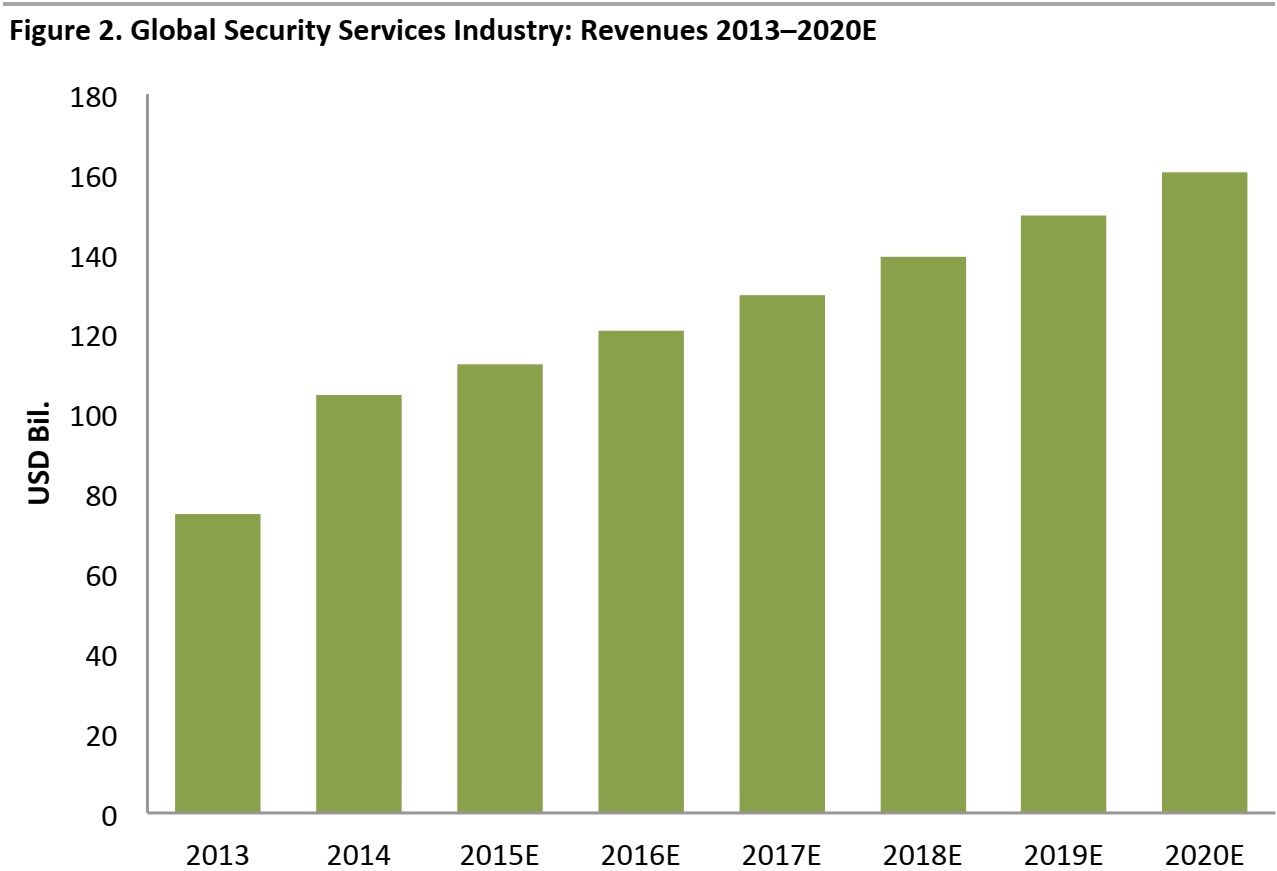
Source: S&P Capital IQ/FBIC Global Retail & Technology
The Professionally Installed, Professionally Monitored Security Services Companies
The following is a list of the top companies that professionally install home security devices and provide monitoring services for a fee (lengths of contracts vary). An installation team usually sets up the system, which may include an alarm and security cameras. These are hardwired and are operated via a control panel fixed to a wall inside the house. The homeowner is given some training on how to operate the system and on what to do if the alarm goes off. These firms are leading the industry by market share.
*This list includes service providers that work with agents to provide residential security, and are therefore not directly B2C vendors, even though end users are individual customers. **As this is total revenue, it includes revenue from residential and commercial services. ***G4S is not a B2C vendor, but it provides consumer services through agents such as property companies. Source: S&P Capital IQ/FBIC Global Retail & Technology
The DIY Installation, Fee-Based Monitoring Services Companies
These companies sell equipment such as cameras, smoke/fire detectors, sensors and control panels that can be installed by a homeowner. They offer professional monitoring services and alert the customer if something is amiss or if an alarm is triggered while the customer is away.Source: frontpointsecurity.com/protectamerica.com/lifeshield.com/oplinkconnected.com/simplisafe.com/FBIC Global Retail & Technology
The DIY and MIY Companies
These companies offer only DIY and MIY systems: homeowners buy the products from retailers, and then install and monitor them on their own. Some of these products provide only basic functions such as an alarm trigger during a break-in or security cameras for monitoring activity, but others come with smart features. Citibank estimates that DIY/MIY systems will command 34% of the market in five years, with professionally installed and monitored systems dropping to 61% of the market.SMART SYSTEM INTEGRATION
Smart home security devices can be connected to and work in unison with other devices that perform functions such as controlling climate, turning on/off lights when a person enters/leaves a room, detecting air quality, and monitoring children and pets. Below, we outline a few examples of what sets smart security devices apart.Smart Locking Systems
Smart locks are designed to lock and unlock based on signals received from an authorized device such as a smartphone, hub or key fob configured to open only certain/specific doors. Some locks also offer the additional functionality of alerting the homeowner if the lock has been breached. Some of the most popular smart locks on the market include the August Smart Lock and the Goji Smart Lock. AUGUST SMART LOCK: This door lock is fully automatic, works with the existing deadbolt system of a home’s door and can be operated through an app on the user’s phone.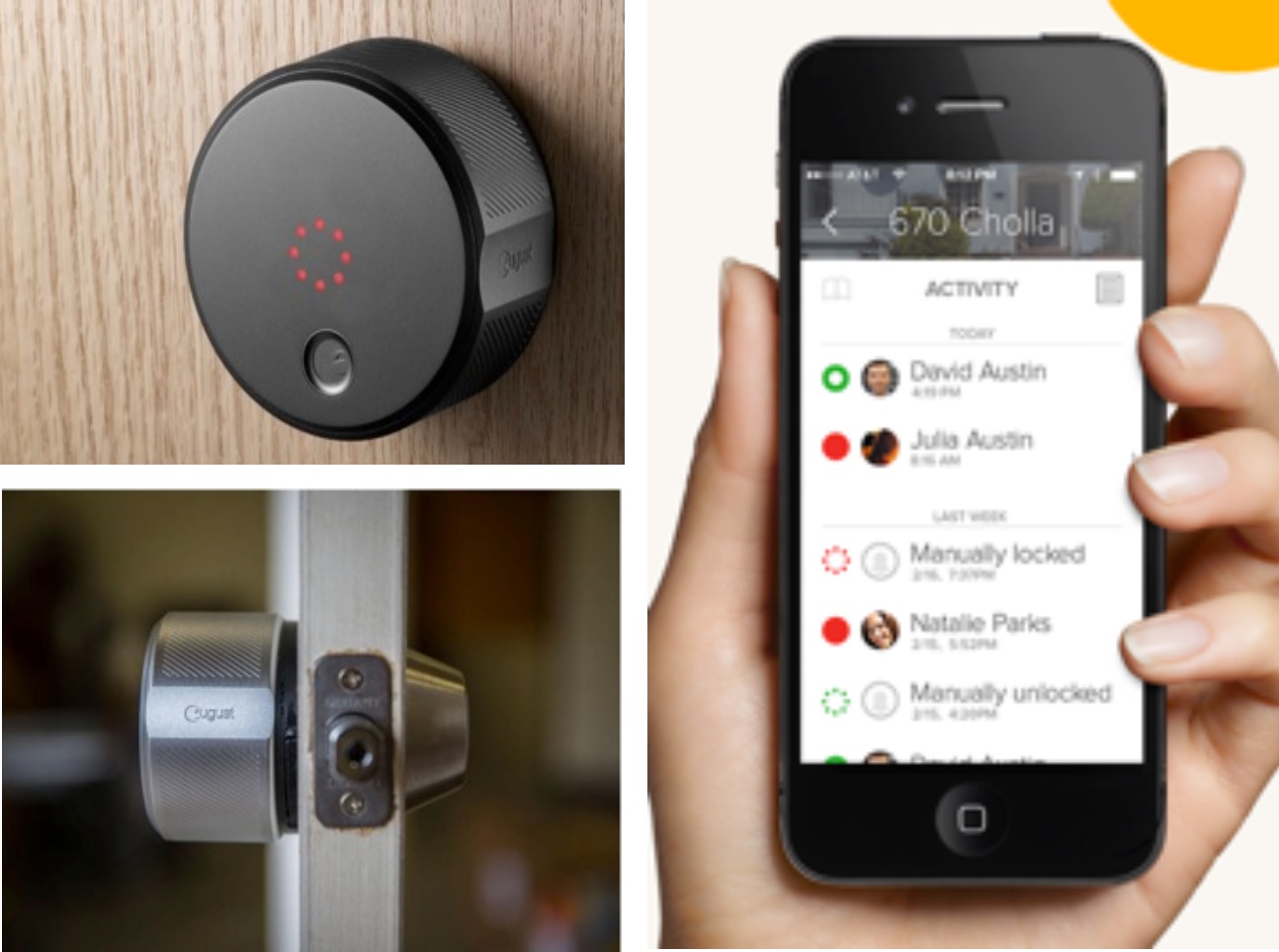
Source: August.com
- The auto-unlock feature allows the door to unlock/lock when the homeowner approaches/leaves, with no need for a signal from a smartphone.
- The owner can also authorize other users to enter the home with digital access keys that can be used with their own smartphones. The app keeps track and informs the owner of when the users entered and exited the home.
- The lock runs on batteries, and when it is time to replace them, it sends the user a notification. August provides a free maintenance service for the lock, and the lock is also compatible with the Nest home system.
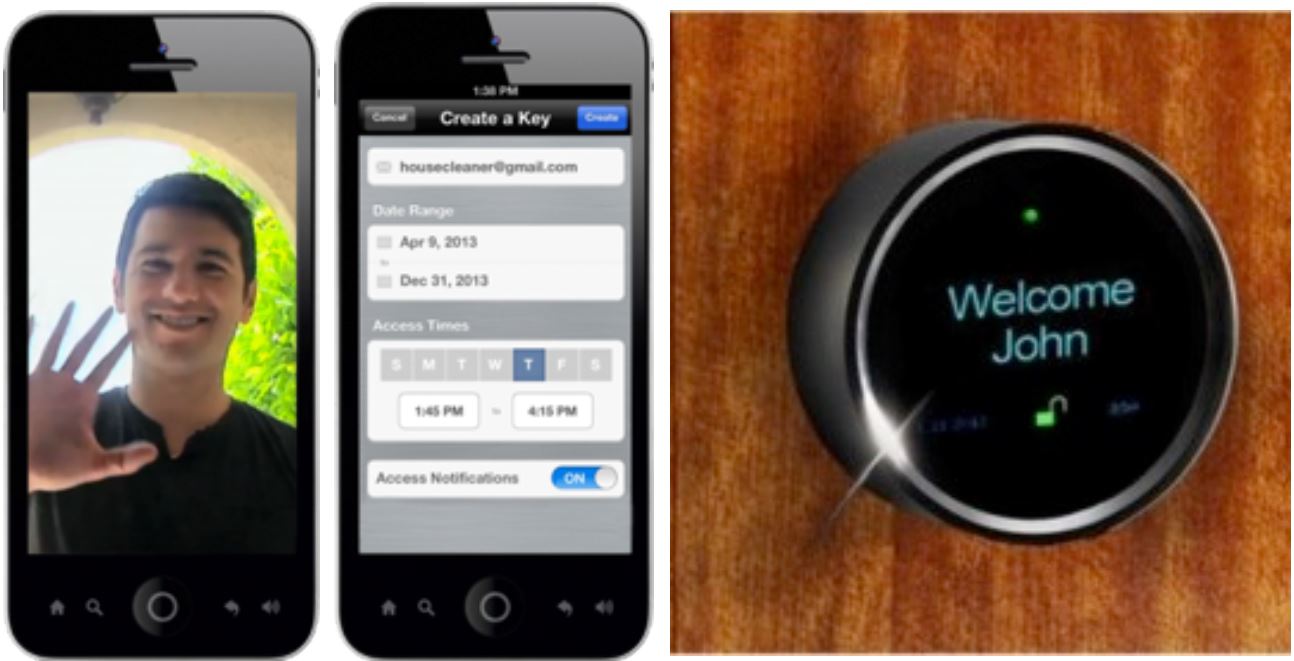
Source: Gojiaccess.com
- It works with Bluetooth for smartphone or a key fob, and via wi-fi if operated remotely.
- It greets the homeowner by name when it unlocks and can send the user pictures of visitors who are at the door.
- Access can be provided to visitors for specific dates and times as well.
- If the owner is locked out, a Goji customer service representative can remotely unlock the door.
Other popular smart locks include:

Source: kwikset.com/samsungdigitallife.com/havenlock.com/lockitron.com/FBIC Global Retail & Technology
OUTDOOR SECURITY CAMERAS
Smart home security cameras can send live feeds to the user’s smartphone, and they come with features such as trespasser-deterrent sirens, intercom systems and more. Some of the more popular cameras are: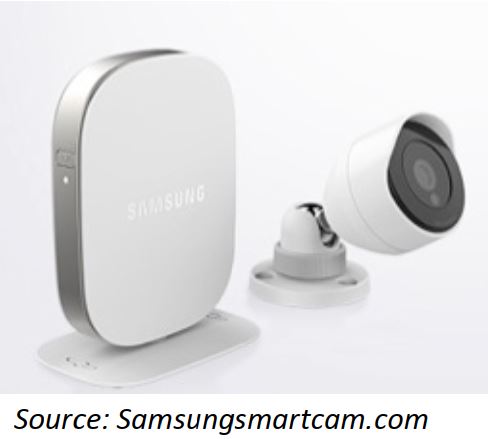 SAMSUNG SMARTCAM HD: This is an outdoor camera that needs to be wired through a power source and connected to a data receiver through an Ethernet cable.
SAMSUNG SMARTCAM HD: This is an outdoor camera that needs to be wired through a power source and connected to a data receiver through an Ethernet cable.
- The camera can be connected to a wi-fi module, through which it communicates with the user’s home wi-fi.
- The video can be viewed by up to five users over wi-fi and saved to a micro SD card.
- The camera is water- and vibration-proof, and has night vision capabilities as well.
 Source: Getkuna.com[/caption]
KUNA: This is an outdoor porch light with security functionalities. The light fixtures come in three contemporary designs and can replace an older light fixture.
Source: Getkuna.com[/caption]
KUNA: This is an outdoor porch light with security functionalities. The light fixtures come in three contemporary designs and can replace an older light fixture.
- The light has a built-in wi-fi security camera and microphone.
- The camera and microphone allow the user to see and speak to the person at the door via smartphone.
- The camera is weatherproof and is discreetly positioned below the light
INDOOR SECURITY CAMERAS
Some cameras are designed for indoor use, and can also be used as a pet cam or baby monitor.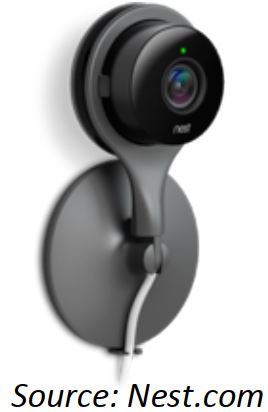 NEST CAM: This three-megapixel camera with a field of view of 130 degrees provides clear, high-quality video, and has a built-in microphone and speaker for communication.
NEST CAM: This three-megapixel camera with a field of view of 130 degrees provides clear, high-quality video, and has a built-in microphone and speaker for communication.
- Video can be saved to cloud storage.
- The camera works in conjunction with other Nest products, so it turns off when the Nest thermostat detects that the user is home.
 CANARY: This indoor camera comes with added environmental-sensing capabilities.
CANARY: This indoor camera comes with added environmental-sensing capabilities.
- The Canary contains an intercom system, siren and environmental sensors that detect fluctuations in air quality, temperature and humidity, and signal the user about potentially dangerous conditions at home.
- It switches to “away” mode when the user is not home, and saves recorded video to the cloud. The camera senses when the user is home and stops recording by switching to “private” mode.
 BUTTERFLEYE: This camera can be used as a pet cam and baby monitor.
BUTTERFLEYE: This camera can be used as a pet cam and baby monitor.
- It turns on when it senses activity in the room and is able to detect the difference between humans and pets.
- It sends a live feed to the user’s smartphone and is cordless. It has up to 12 hours of internal data storage and can record without wi-fi.
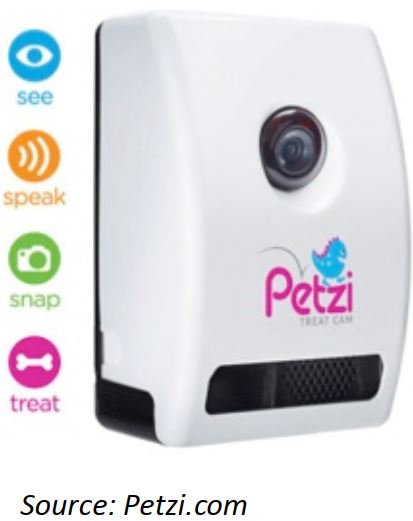 PETZI TREAT CAM: This is a camera for monitoring pets.
PETZI TREAT CAM: This is a camera for monitoring pets.
- This camera allows the user to speak and interact with a pet through a speaker.
- Users can click pictures of pets and the camera also has night-vision capabilities.
- Users can dispense treats and feed their pets when they are away.
 WITHINGS SMART BABY MONITOR: This camera allows parents to monitor babies and children.
WITHINGS SMART BABY MONITOR: This camera allows parents to monitor babies and children.
- This works like a standard wi-fi camera and has the added features of sound, temperature and motion sensors.
- It can also play a lullaby, and has night vision capabilities and a soft nightlight.
- Users can access a recorded history of movement and sound variations from the app.
[caption id="attachment_87395" align="alignleft" width="253"]
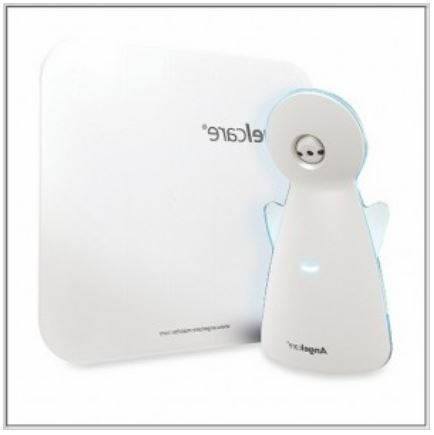 Source: Angelcarebaby.com[/caption]
ANGELCARE AC1200 BABY MONITOR: This baby monitor can play lullabies and has a soft nursery light and added sensing capability.
Source: Angelcarebaby.com[/caption]
ANGELCARE AC1200 BABY MONITOR: This baby monitor can play lullabies and has a soft nursery light and added sensing capability.
- This monitor contains a sensor that fits under the mattress to detect the baby’s movements.
- If no movement is detected for more than 20 seconds, it notifies the parents through a smartphone that the baby has settled down
